ISSN : 2287-9099
Vol.1 No.2

Abstract
Dr. Ranganathan’s “Principles for Helpful Sequence” among the set of normative principles play an exclusive role in the arrangement of subject isolates. Each subject in the universe of subjects is regulated by a guiding principle of its own which analogously determines the sequence of Arrays in ordering the subject surrogates or isolates. For example, the “Principle of Later-in-Evolution” is applied for sequencing isolates of Animal and Plant Species; this concept can be applied to one of the tools of KOS viz. Taxonomies. The application of Principles for Helpful Sequence is summarily presented and in the process the paper highlights the inherent elements of knowledge organization in each one of these principles in a manner that might map the future course of research in this area with the potentiality to bring about a relation between principles for helpful sequence and KOS.

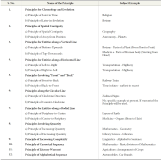


Abstract
Relevance has a long history of scholarly investigation and discussion in information science. One of its notable concepts is that of ‘user-based’ relevance. The purpose of this study is to examine how users construct their perspective on the concept of relevance; to analyze what the constituent elements (facets) of relevance are, in terms of core-periphery status; and to compare the difference of constructions of two groups of users (information users vs. information professionals) as applied with a social representations theory perspective. Data were collected from 244 information users and 123 information professionals through use of a free word association method. Three methods were employed to analyze data: (1) content analysis was used to elicit 26 categories (facets) of the concept of relevance; (2) structural analysis of social representations was used to determine the core-periphery status of those facets in terms of coreness, sum of similarity, and weighted frequency; and, (3) maximum tree analysis was used to present and compare the differences between the two groups. Elicited categories in this study overlap with the ones from previous relevance studies, while the findings of a core-periphery analysis show that Topicality, User-needs, Reliability/Credibility, and Importance are configured as core concepts for the information user group, while Topicality, User-needs, Reliability/Credibility, and Currency are core concepts for the information professional group. Differences between the social representations of relevance revealed that Topicality was similar to User-needs and to Importance. Author is closely related to Title while Reliability/ Credibility is linked with Currency. Easiness/Clarity is similar to Accuracy. Overall, information users and professionals function with a similar social collective of shared meanings for the concept of relevance. The overall findings identify the core and periphery concepts of relevance and their relationships in terms of coreness, similarity, and weighted frequency.


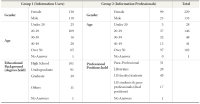




Abstract
Blogs are readily available sources of opinions and sentiments which allows bloggers to exert a certain level of influence over the blog readers. Previous studies had attempted to analyze blog features to detect influence within the blogosphere, but had not studied in details influence at the blogger-level. Other studies studied bloggers’ personalities with regards to their propensity to blog, but did not relate the personalities of bloggers to influence. Bloggers may differ in their way or manner of exerting influence. For example, bloggers could be active participants or just passive shares, or whether they express ideas in a rational or subjective manner, or they are received positively or negatively by the readers. In this paper, we further analyze the engagement style (frequency, scope, originality, and consistency of the blog postings), persuasion style (appeals to reasons or emotions), and persona (degree of compliance) of individual bloggers. Methods used include similarity analysis to detect the sharing-creating aspect of engagement style, subjectivity analysis to measure persuasion style, and sentiment analysis to identify persona style. While previous studies analyzed influence at blog site level, our model is shown to provide a fine-grained influence analysis that could further differentiate the bloggers’ influence style in a blog site.














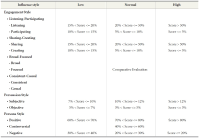









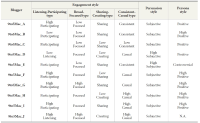
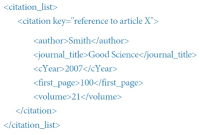
Abstract
Citing literature is a very important activity for scholars in writing articles. Many publishers and libraries build citation databases and provide citation reports on scholarly journals. Cited-by linking is a service representing what an article cites and how many times it cites a specific article within a journal database. Recently, information services based on DOIs (Digital Object Identifiers) have been increasing in number. CrossRef, a non-profit organization for the DOI registration agency, maintains the DOI system and provides the cited-by linking service. Recently, the number of Korean journals adopting DOI is also rapidly increasing. The Korea Institute of Science and Technology Information (KISTI) supports Korean learned societies in DOI related activities in collaboration with CrossRef. This study analyzes cited patterns of Korean DOI journal articles using CrossRef’s cited-by linking data and a Korean journal citation database. This analysis has been performed in terms of publication country and the language of journals citing Korean journal articles. The results show that DOI, SCI(E) (Science Citation Index (Expanded)), and English journals are more likely to be cited internationally.


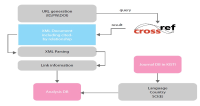





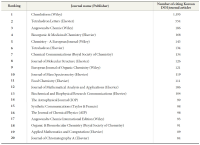


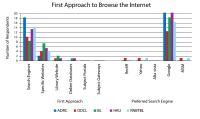
Abstract
This paper aims to determine the preference and use of electronic information and resources by blind/visually impaired users in the leading National Capital Region (NCR) libraries of India. Survey methodology has been used as the basic research tool for data collection with the help of questionnaires. The 125 in total users surveyed in all the five libraries were selected randomly on the basis of willingness of the users with experience of working in digital environments to participate in the survey. The survey results were tabulated and analyzed with descriptive statistics methods using Excel software and ‘Stata version 11.’ The findings reveal that ICT have a positive impact in the lives of people with disabilities as it helps them to work independently and increases the level of confidence among them. The Internet is the most preferred medium of access to information among the majority of blind/visually impaired users. The ‘Complexity of content available on the net’ is found as the major challenge faced during Internet use by blind users of NCR libraries. ‘Audio books on CDs/DVDs and DAISY books’ are the most preferred electronic resources among the majority of blind/visually impaired users. This study will help the library professionals and organizations/institutions serving people with disabilities to develop effective library services for blind/visually impaired users in the digital environment on the basis of findings on information usage behavior in the study.



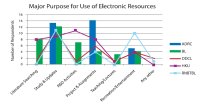


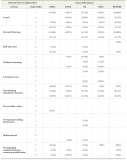

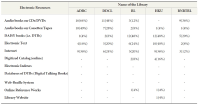


Abstract
In this study, the properties of the object types required to describe the relationship among research data resources, which may be generated during the life cycle of the research, are derived. The properties of Fedora Commons and DSpace, which are open source software used for resource management, and schema properties published in DataCite were analyzed. Based on relation names of Fedora Commons, nine new relation names were derived. Thirty-eight object type properties consolidating the target properties of the analysis were derived. The result of this study can be used as basic material for crosswalk research studies of object type relation terms to ensure interoperability among the systems.



